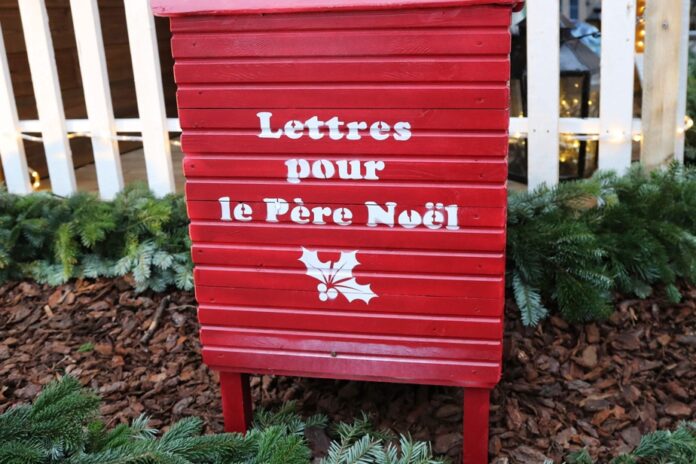(Paris) Under the red coat of Santa Claus hides this year the writer of suspense novels Michel Bussi, who has sharpened his pen to respond to the million letters that children will send via La Poste, a tender role that n ‘had taken on no personality since Françoise Dolto in the 1960s.
“I received your very pretty letter. Thank you, it made me so happy! I still love receiving mail in an envelope that I open with my heart beating very hard: in 2023, it is Michel Bussi who responds with emotion to children who send their letter to Santa Claus.
It all began in 1962 when postal workers discovered missives addressed to the imaginary character with the white beard in the mail being delivered. Moved, they then decided to respond, “of their own accord”, hidden “in an attic”, the law strictly prohibiting opening the mail, says David Resse, head of the Santa Claus secretariat based in Libourne (Gironde) .
The initiative reached the ears of the psychoanalyst and pediatrician Françoise Dolto, sister of the then Minister of PTT, who found the approach “brilliant”, continues Mr. Resse.
She thus writes the “very first letter” model which will be sent back to the children, with “a little educational touch”.
Santa Claus’ secretariat, managed by La Poste, was born.
Since then, its success has continued, with more than a million letters sent per year.
This represents “30 to 40,000 letters per day to be processed […], an absolutely considerable figure” because “the families attach a lot of importance to this first writing”, rejoices Mr. Resse.
This year, Santa’s office opens on November 14th.
After Françoise Dolto, the task was entrusted to the marketing department of La Poste, and in 2023 the writer of suspense novels Michel Bussi takes over.
“I am very proud to have been chosen,” confides to AFP the author, whose “magic and melancholy of childhood” surround the novels, and who has written for children’s literature.
On the envelopes received at Santa’s secretariat, we find “writings everywhere, in all directions”, drawings, stickers, and fanciful addresses such as “Avenue des Rennes”, “Aurores boréales” or even ” In the clouds”, testifies David Resse who says he is “touched”.
“What (the children) remember is the moment when they write it, decorate it, talk about it,” adds Walid Mezazra, a 40-year-old human resources manager and father of two children.
For Michel Bussi, the idea of the letter is not “just to make a list of gifts”, but for children to think, to let “their imagination, their fantasy, their humanity” speak.
And responding to them constitutes “an enormous pressure”, adds the author who refers to “a colossal circulation” of the standard letter.
But it’s also a “nice” exercise in style, with “something short (which has) genre constraints” and which must convey “a positive message without being completely into something moral”, lists the writer.
Michel Bussi had to write a second letter, intended for adults who “still believe in Santa Claus” and who write to him, he says. David Resse confirms that the “marginal” phenomenon exists, with adults seeking “an attentive ear”.
Elena Frigioi, a 43-year-old interior designer, dreads the moment when her children will know that Santa Claus does not exist: “Discovering the truth is the ugly part…”.
In the meantime, with her children, Antoine, 7 years old, and Marie, 4 years old, she makes the beautiful letter and places it “in the red mailbox” installed by her town hall, as some municipalities do in parallel with the initiative from the post office. But without ever receiving a response, because in these cases there is no dedicated secretariat…
On the side of La Poste, David Resse insists: there is no need to put a stamp, but mention the child’s address so that the response can reach them and deposit the letter in the La Poste box circuit.
Elena then leans towards Marie: “This year, we’re going to put the letter in the yellow mailbox.”















